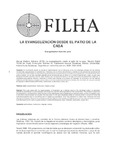
Please use this identifier to cite or link to this item:
http://ricaxcan.uaz.edu.mx/jspui/handle/20.500.11845/1154Full metadata record
| DC Field | Value | Language |
|---|---|---|
| dc.contributor | 226700 | es_ES |
| dc.coverage.spatial | Zacatecas | es_ES |
| dc.creator | Macias Madero, Adriana | - |
| dc.date.accessioned | 2019-10-01T18:33:44Z | - |
| dc.date.available | 2019-10-01T18:33:44Z | - |
| dc.date.issued | 2019 | - |
| dc.identifier | info:eu-repo/semantics/publishedVersion | es_ES |
| dc.identifier.issn | 2594-0449 | es_ES |
| dc.identifier.uri | http://ricaxcan.uaz.edu.mx/jspui/handle/20.500.11845/1154 | - |
| dc.identifier.uri | https://doi.org/10.48779/b52r-sy12 | - |
| dc.description | This study deals with the implementation of horticulture as a strategy used by the mendicant orders, to guarantee subsistence and interact in a more dynamic and simple way with the native populations of the new territory. This analysis is done from the perspective of archaeohistory, which focuses on the classification and understanding of material culture, as this is a tangible result of the events that took place at a certain time and place, in this case Zacatecas during the colonial period. It should be noted that horticultural practice was not something new for indigenous populations, since they practiced it to obtain food, medicines and even offerings for the gods. However, the coexistence with the religious orders allowed to integrate and root new crops as well as to perfect work techniques for the care of a great variety of multifunctional species (food, medicinal, constructive, ornate, etc.) | es_ES |
| dc.description.abstract | En el presente estudio se aborda la implementación de la horticultura como una estrategia utilizada por las órdenes mendicantes, para garantizar la subsistencia e interactuar de una forma más dinámica y sencilla con las poblaciones autóctonas del nuevo territorio. Este análisis se hace desde la perspectiva de la arqueohistoria, enfocada en la clasificación y el entendimiento de la cultura material, por ser ésta resultado palpable de los aconteceres que se dieron en un determinado tiempo y lugar, en este caso Zacatecas durante el periodo colonial. Cabe destacar que, la practica hortícola no era algo nuevo para las poblaciones indígenas, la practicaban para obtener alimento, medicinas e incluso para ofrendar a los dioses; sin embargo, la convivencia con las órdenes religiosas permitió integrar y arraigar nuevos cultivos, así como perfeccionar técnicas de trabajo para el cuidado de una gran variedad de especies multifuncionales (alimenticias, medicinales, constructivas, ornato, etc.) | es_ES |
| dc.language.iso | spa | es_ES |
| dc.publisher | Universidad Autónoma de Zacatecas | es_ES |
| dc.relation.uri | generalPublic | es_ES |
| dc.rights | Atribución-NoComercial-CompartirIgual 3.0 Estados Unidos de América | * |
| dc.rights.uri | http://creativecommons.org/licenses/by-nc-sa/3.0/us/ | * |
| dc.source | Revista Digital FILHA, No. 20 Enero-julio 2019. | es_ES |
| dc.subject.classification | HUMANIDADES Y CIENCIAS DE LA CONDUCTA [4] | es_ES |
| dc.subject.other | arqueohistoria | es_ES |
| dc.subject.other | horticultura | es_ES |
| dc.subject.other | integrar | es_ES |
| dc.subject.other | arraigo | es_ES |
| dc.subject.other | archeohistory | es_ES |
| dc.subject.other | horticulture | es_ES |
| dc.subject.other | integrate | es_ES |
| dc.subject.other | rooting | es_ES |
| dc.title | La evangelización desde el patio de la casa | es_ES |
| dc.type | info:eu-repo/semantics/article | es_ES |
| Appears in Collections: | *Documentos Académicos*-- UA Antropología | |
Files in This Item:
| File | Description | Size | Format | |
|---|---|---|---|---|
| La evangelizacion desde el patio de la casa.pdf | 493,44 kB | Adobe PDF |  View/Open |
This item is licensed under a Creative Commons License
